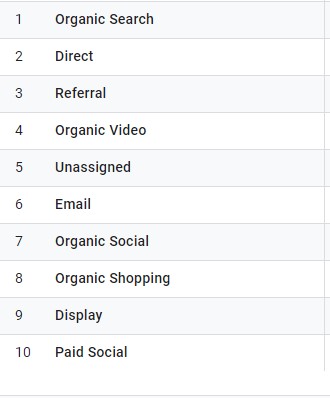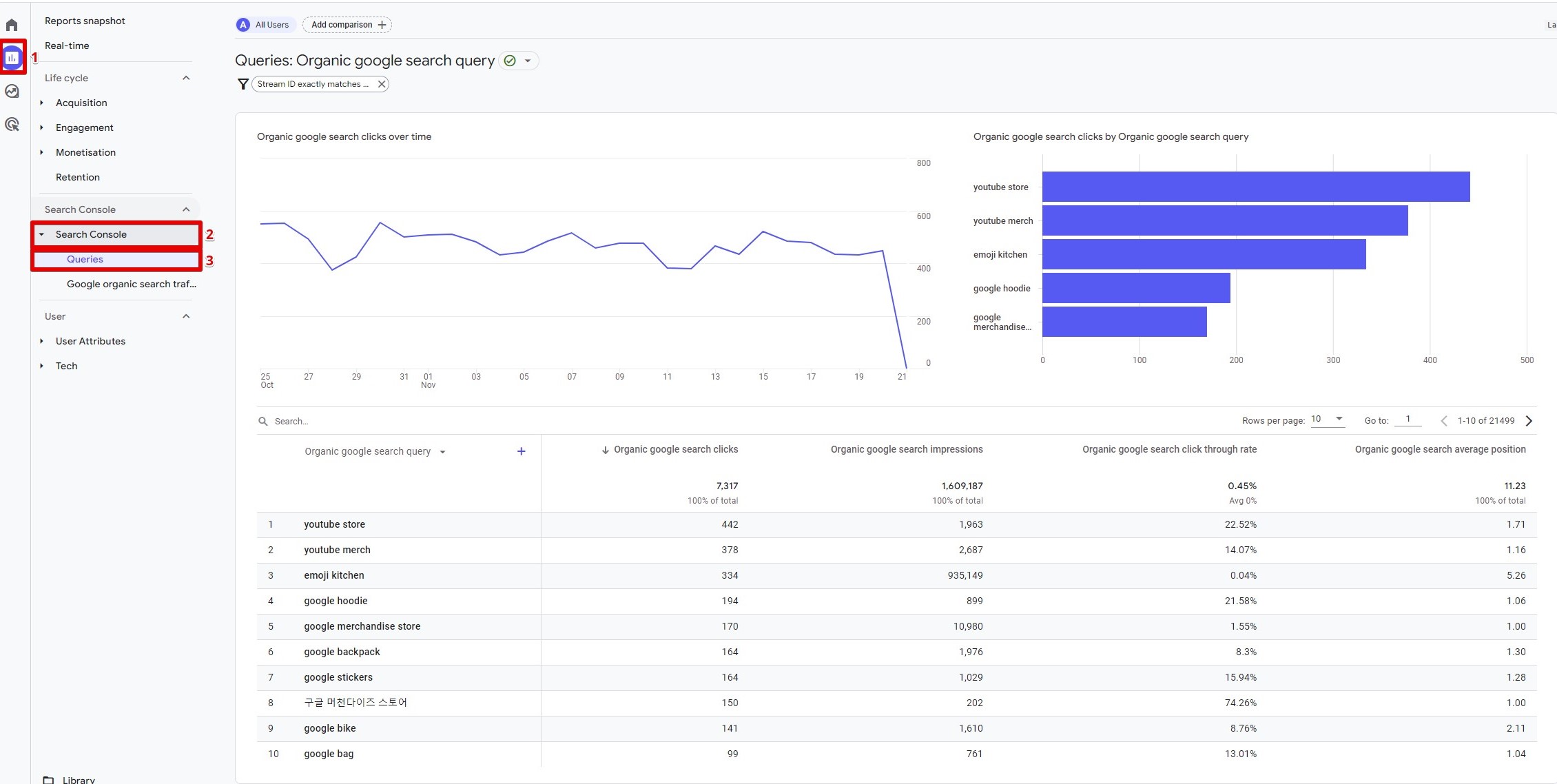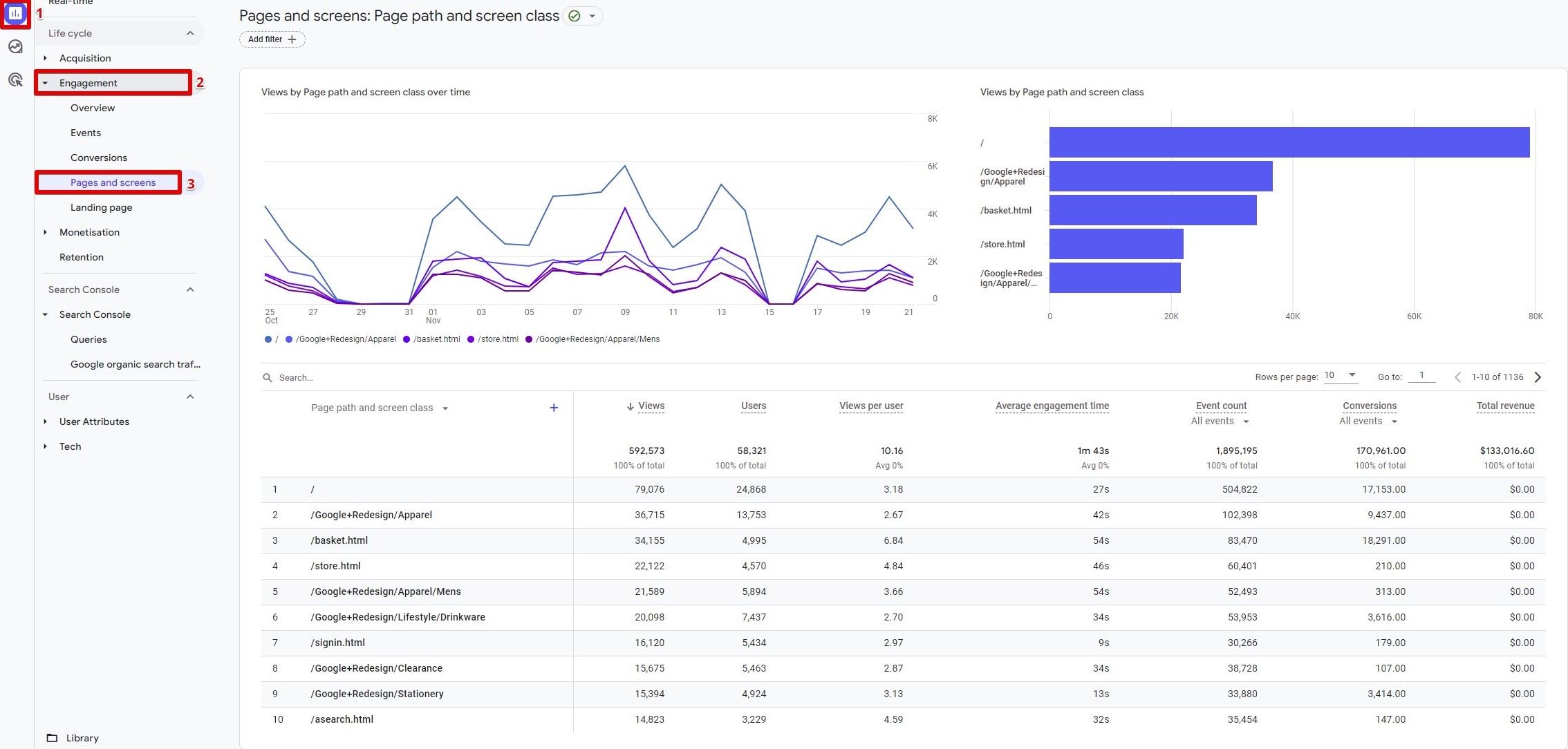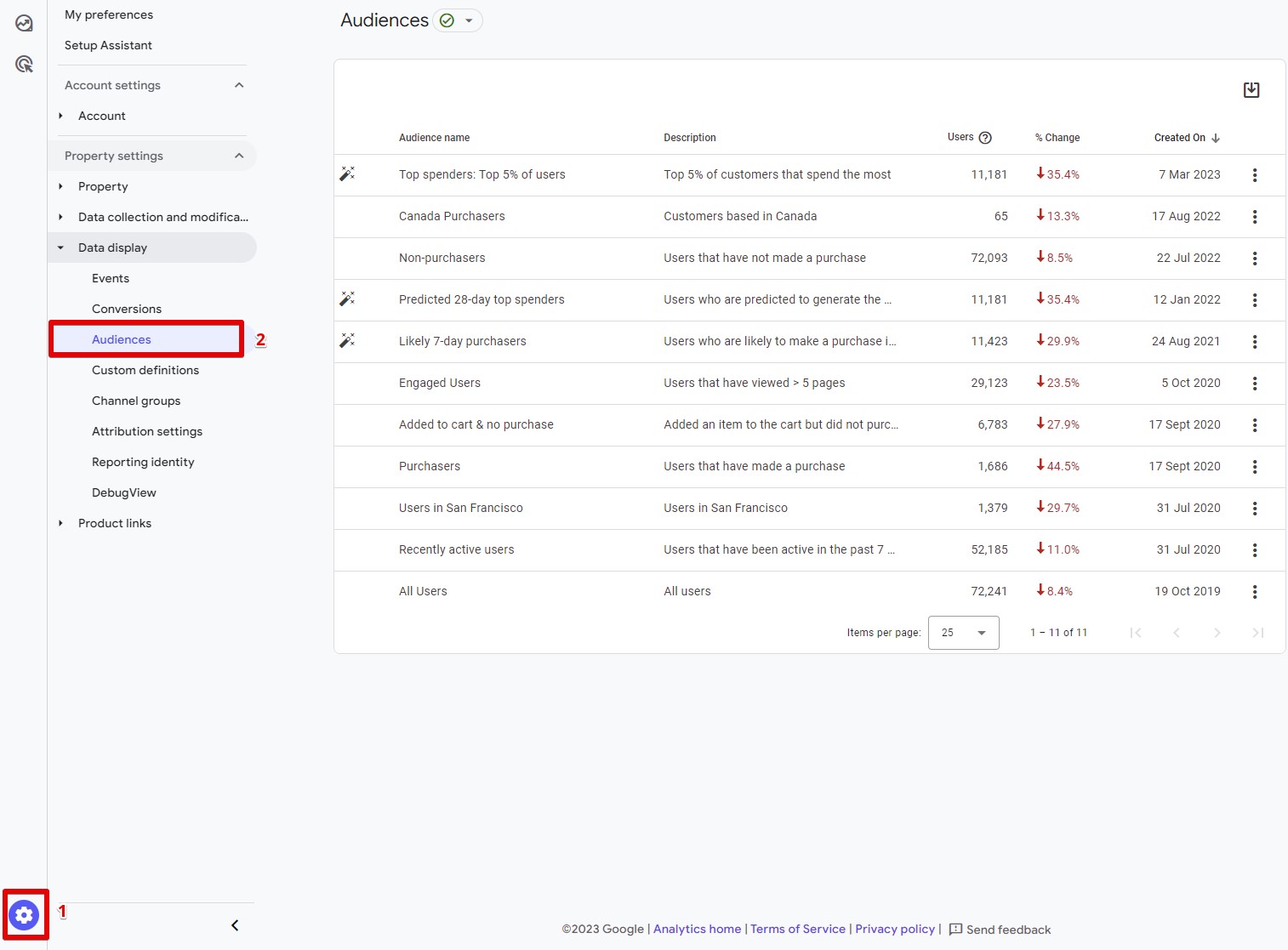Imagine navigating the high seas of digital marketing without a compass.
That’s where Google Analytics 4 (GA4) steps in, acting as your guiding star in the vast universe of SEO.
With its ability to unravel the intricacies of website traffic and user behavior, the role of Google Analytics 4 in SEO is akin to having a seasoned navigator at the helm of your digital strategy.
In this journey, we’ll discover how this powerful tool not only illuminates the path to enhanced visibility but also charts a course toward measurable success in the ever-evolving world of SEO.
Introduction to Google Analytics 4 and SEO
Brief Overview of Google Analytics 4
Google Analytics 4, the latest evolution in web analytics, offers a new way of understanding your website’s traffic.
With a focus on user-centric data and cross-platform tracking, GA4 provides a comprehensive view of the customer journey.
This tool is not just about counting visitors; it’s about understanding their experiences and interactions across your website and apps.
Imagine gaining insights into each user’s journey in a more integrated and intuitive way – that’s the power of GA4!
Event-Based Data Model: GA4’s shift to an event-based model allows for a more nuanced view of user interactions.
Each user interaction is captured as an event, providing a more detailed and holistic story of how users engage with your site. This depth of data is crucial for developing more effective SEO strategies.
Flexible and Customizable Reporting: GA4 offers enhanced report customization, adapting to the unique needs of your site.
With GA4, you can tailor reports using a wide range of dimensions and metrics, giving you the flexibility to focus on the data that matters most to your SEO efforts.
Importance of SEO in Digital Marketing
In the digital marketing universe, SEO is the sun around which all other strategies orbit. It’s the art and science of making your website attractive to search engines, and by extension, to your audience. Without SEO, your site is like a billboard in the desert – rarely seen and easily forgotten.
Visibility and Ranking: Climbing the search engine ladder.
SEO is your ticket to the top of search engine results pages (SERPs). It’s about making your site the first thing people see when they search for your products or services.
User Experience Optimization: Happy visitors make happy customers.
SEO is not just about pleasing search engines. It’s about providing a seamless and enjoyable experience for your visitors. The better the user experience, the higher the chances of conversion.
Check out our podcast episode on effective SEO blogging for eCommerce.
Setting Up Google Analytics for SEO
Setting up Google Analytics 4 is like installing an advanced analytics suite for your website.
GA4’s setup process is streamlined and user-friendly, making it accessible for both beginners and seasoned marketers.
Defining and Setting Up Events in Google Analytics 4 for SEO Tracking
In GA4 events are providing flexibility in tracking conversions and user interactions.
Configuring Events for Key Interactions: Customize events to track specific user actions that are important for your SEO strategy.
Define and configure events that align with your key objectives, such as page views, form submissions, or e-commerce transactions.
Analyzing Event Data for SEO Insights: Use event data to gain a deeper understanding of how users interact with your site.
Regularly analyze your event data to understand user behavior patterns and adjust your SEO strategies accordingly.
Analyzing Traffic Sources
Picture your website as a bustling city airport.
Each visitor is a flight arriving from different parts of the world – or in this case, the internet.
GA4 lets you be the air traffic controller, giving you a bird’s-eye view of where these ‘flights’ originate.
This is where analyzing traffic sources becomes pivotal.
Each channel is like a different genre of story, telling you how visitors found your website.
Was it through the organic search ‘novel’, the social media ‘short story’, or the direct traffic ‘autobiography’?
Understanding these channels helps tailor your SEO and marketing strategies.
Each of these sources provides insights into different aspects of your online presence and helps tailor your SEO and marketing strategies accordingly.
We’ll explain why some of these are important for SEO:
- Organic Search: This indicates visitors who found your site via search engines like Google or Bing. High numbers here suggest strong SEO.
- Direct: Visitors who entered your website URL directly into their browser. This can imply brand awareness or returning visitors.
- Referral: These are visitors who clicked on a link to your site from another site. It’s useful for understanding which external sites are driving traffic to yours.
- Social: This shows traffic from social media platforms. It’s useful for gauging the impact of your social media marketing efforts.
- Email: Visitors who came to your site via an email campaign link.
- Paid Social: Traffic from paid search campaigns, like Google Ads.
Analyzing Channel Performance and Optimizing Marketing Campaigns
You don’t just want visitors; you want the right kind of visitors – the kind that engage, convert, and return. This is where analyzing channel performance comes in.
Performance Metrics: Bounce rates, session duration, and conversions per channel.
These metrics are like the vital signs of your website’s health.
They tell you which channels bring in the healthiest traffic and which ones need a little ‘medicine’ in the form of optimization.
And how do you tailor your approach to each channel?
It’s not one-size-fits-all. Each channel requires a unique strategy.
Maybe your social media visitors love visuals while your organic search visitors are more content-oriented.
Tailor your content and SEO strategies to suit these preferences.
Understanding the Impact of Keywords on Website Traffic and SEO
Keywords are not just words; they’re the bridges that connect your audience to your website. Understanding their impact is crucial for a robust SEO strategy.
Not all traffic is good traffic.
Just like not every visitor to a store buys something, not every website visitor is valuable. Assess the quality of traffic each keyword brings. Are they staying, engaging, browsing? Or just bouncing off?
Which keywords are your MVPs?
Some keywords are like secret weapons; they bring in visitors who convert.
Identifying these MVP (Most Valuable Player) keywords allows you to focus your efforts on terms that not only bring traffic but also drive conversions.
When it comes to keywords, this is the part where Google Search Console comes in handy. Combining these 2 tools is a must for anyone working with SEO.
Once you do that, you’ll be able to access the Queries report. To find this report select Reports → Search Console → Queries.
Here you can see via which queries users came to your posts.
Content Optimization Strategies
Techniques for Optimizing Website Content Using Google Analytics 4 Data
In the realm of content optimization, GA4 acts as your advanced analytical partner, offering deeper insights into user interactions. With GA4’s focus on event tracking and user engagement, you can fine-tune your content to resonate more effectively with your audience.
Utilize GA4’s event tracking to understand how users interact with your content.
Shift from traditional metrics to a more nuanced view of user engagement, analyzing events like scroll depth, video views, and file downloads to inform your content strategy.
Dive into detailed user behavior analytics with GA4.
GA4 provides a richer understanding of how users interact with your content, allowing for more precise adjustments to enhance user engagement and content effectiveness.
You can find this information in the Pages and screens tab in Engagement.
Analyzing Content Performance
Monitoring and adapting your content based on its performance is critical. Use GA4’s comprehensive analytics to evaluate content effectiveness and make data-driven improvements.
Leverage GA4’s detailed metrics to track content performance.
Beyond page views and time on page, explore more sophisticated metrics such as user engagement rate and conversion events related to specific content pieces.
Utilize GA4’s capabilities for A/B testing and content optimization.
Employ GA4’s analysis to perform A/B testing and make informed adjustments to your content, ensuring it aligns with user preferences and behaviors.
Audience Segmentation and Targeting
In GA4, audience segmentation becomes more dynamic and insightful, allowing for tailored content and marketing strategies.
You can find GA4 audiences under Admin → Audiences.
Leverage GA4’s ability to segment audiences based on a wide array of parameters, including user behavior, engagement patterns, and demographics, to create more targeted content.
Use GA4’s custom audience builder to create segments that reflect specific user behaviors and preferences, enabling more personalized marketing strategies.
After you’re done segmenting your audience, it’s time to target it and meet their expectations.
With GA4, adapt your content and marketing strategies to meet the unique needs of each audience segment.
Harness the power of GA4’s audience insights to create content that resonates with different segments, ensuring a more engaging and effective user experience.
Utilize GA4’s detailed audience data to inform your marketing campaigns, ensuring that your efforts are focused on the most receptive and relevant audiences.
Learn more about creating and using GA4 audiences.
Advanced Google Analytics 4 Features for SEO
Utilizing Advanced Features like Custom Segments and Multi-Channel Funnels
GA4 is not just a tool; it’s a Swiss Army knife packed with advanced features to elevate your SEO game. Features like custom segments and multi-channel funnels are like having a high-powered microscope to examine the intricacies of your traffic and conversions.
Custom Segments: Tailor your analysis to specific groups of users.
Create segments based on user behavior, demographics, or traffic sources. This allows you to analyze specific groups of your audience in detail, understanding their unique behavior and needs.
Multi-Channel Funnels: Understand the full path to conversion.
This feature is like tracing the full journey of a detective tracking a suspect. It shows you how different marketing channels work together to lead a user to convert, giving you a comprehensive view of your marketing effectiveness.
Integrating Google Analytics 4 with Other Tools for Enhanced SEO Insights
When you combine GA4 with other tools like Google Search Console or CRM software, it’s like forming a superhero team, each member bringing their unique powers to the table.
Google Search Console Integration: Get search-specific insights.
Linking GA4 with Google Search Console provides deeper insights into how your site appears in search results, helping you fine-tune your SEO strategy with precision.
CRM Integration: Connect user behavior with customer data.
By integrating with a CRM, you can connect the dots between website behavior and customer actions, offering invaluable insights into the customer journey from first click to final sale.
Summary
As we wrap up our exploration, it’s clear that Google Analytics is not just a tool; it’s a compass, guiding you through the ever-changing landscape of SEO.
It gives you the insights to navigate with confidence, ensuring that your website not only reaches its audience but also resonates with them.
Now it’s time for you to utilize Google Analytics for SEO.
To continue your learning, check out our podcast episode on eCommerce SEO and learn what works now!
Author name: Julian Juenemann
Author bio: Julian started and grew venture-backed startups with his unique ‘data first’ approach to Online Marketing. He then founded MeasureSchool.com to help marketers like him, with the data-driven way of digital marketing.




